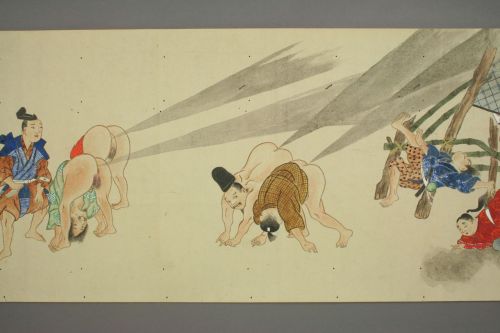
I'd love to tell you about the ironic subtleties included to mock the upper crust of Japanese society, the unique use of tools to create images that remind one of the transience of life, the hidden meaning of the work which delves into existentialism and the wonders and amusements of the floating world.
Nope. It's a fart battle. That's all. Sure, there are a few little interesting tidbits. Feel free to check out the rest of the scroll. It makes me very nostalgic. I remember being small and having to trek out to the library and get special permission to go to the back room which smelled of dust and dead caterpillars and appeared to be coated in as much, and painstakingly search for the texts I needed and ever-so-slowly wind through the archives on a big machine that displayed them to me so my grubby little hands didn't destroy the precious originals, all the while the room becoming even more swelteringly hot and choking me. I hated it until I had to do the same thing for a project recently, and was reminded how much I enjoy the smell of old things.
The university archive these images are from is done in roughly the same process, except for now we can all use the internet from the comfort of our own homes. I wonder after the people who would need to look up this scroll for reference.
I can smell this one, too. This is an old scroll I do not want to smell.
However, this is not an exclusive subject matter in any way. Fart battles are actually a thing in Japanese art of this time. Several artists actually did their own interpretations of the most ludicrous and powerful farts you'll ever see, everyone from the extremely famous Utagawa Kuniyoshi to a revered Buddhist monk and philosopher.
Many more interpretations, like this one, remain anonymous. To some extent, the fart battles were a response to the encroaching Westernization of Japan, which I've discussed a few times before. As Western influence began to seep into everyday society, and Japan was declared crude, distasteful, base and barbaric, many traditional Japanese things were adjusted or done away with entirely to appease the discerning eyes of the Western world. Brothels were closed, pleasure districts dwindled, geisha were temporarily forced to cease activity until the West could figure out what it was that they did, kabuki plays were infused with Christian morals, and art was, to some extent, censored. Glorifying nudity and peasant life was crude, it was decided.
So, in a way, the fart battles appear to be a kind of protest, depicting men in court hats doing the most vile and odious things imaginable, their genitals and hind-parts fully exposed and flapping in the wind, farting openly at one another as noble ladies look on with interest and swoon after the most noxious of fumes.
I can't think of a more disturbing and downright hilarious way to fully embrace the whole absurd idea of Japan's inferiority. "We Japanese are a simple and vulgar people with no regard for your manners? Well, take a look at THIS!"
But there is one man who produced some fart scrolls who did not wish to remain anonymous. In fact, fart battles are almost synonymous with him. Many anonymous works are accredited to him, or said to be "in the style of" him, and he in fact produced not one, but several fart battle scrolls of varying degrees of obscenity.
I've never really done an artist spotlight before, even though I have heavily mentioned and featured the work of Yoshitoshi, and showcased Sekien a few times in my entries on yōkai. But since I'm here, I think I will expand the entry to show you some pictures and tell you a bit about my other favourite Japanese artist.

And no, it's not because of the farting scrolls.
One of my favourite artists of all time is Kawanabe Kyōsai (河鍋 暁斎).
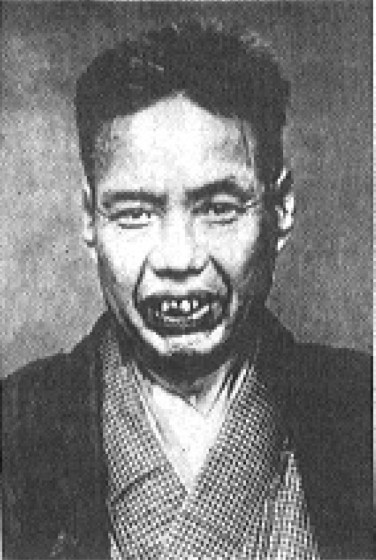
I'm not making a good case for myself and my taste in art, am I? As a future eccentric old art historian, I would tell you to settle down and let me explain, and call you a whippersnapper and murmur incoherently about the respect kids used to have in my day, but as I'm only a student and you're still laughing at me for honestly enjoying the work of a man who drew funny pictures of people farting at each other, I think I'll just plow on ahead with the content.
First of all, I think that everyone should read this article (it's in English). It's extremely well-written, and provides excellent insight into Kyōsai's life. The man really was, at least in my opinion, an artistic genius. His talent was astounding, which lent itself well(?) to the times when he would just get drunk off his ass and rampage through something that pissed him off, leaving us with prints of epic fart battles created with more artistry and technical skill than many non-drunk and angry artists of the day.
He also did a surprisingly good job of employing Western techniques, resulting in some very strange-looking art that is at once in the Japanese style, and yet also distinctly appears Western and modern. And the best thing about it is that he was only doing it to make fun of Japanese artists that tried too hard to adapt to the West and shun the traditional styles, so once again, the art is, on his end, supposed to look purposefully terrible, but remains as still being better than everyone he was making fun of.
Another "Western adaptation" noted in the article is his series of little animals that do human things, caricatures that look like the type of cartoon friends more common in the West, or in modern-day Japanese animation, not something we're used to seeing in traditional Japanese art.

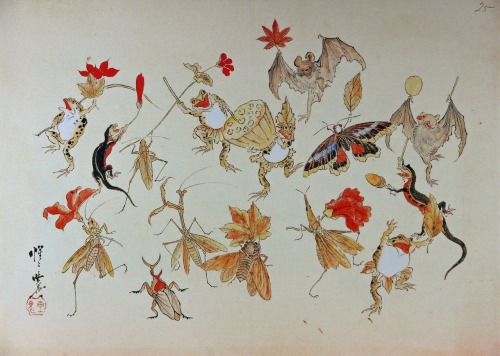
But when he drew real animals, the pieces still look timeless and of unimaginable quality.

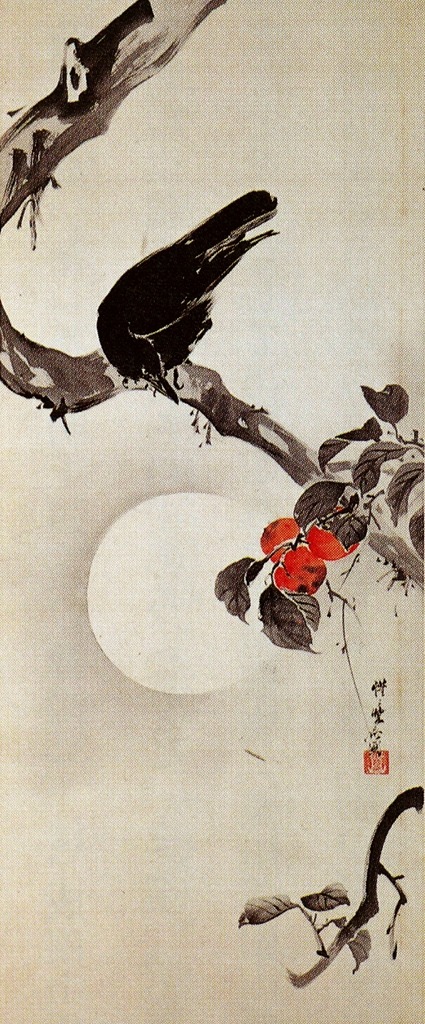
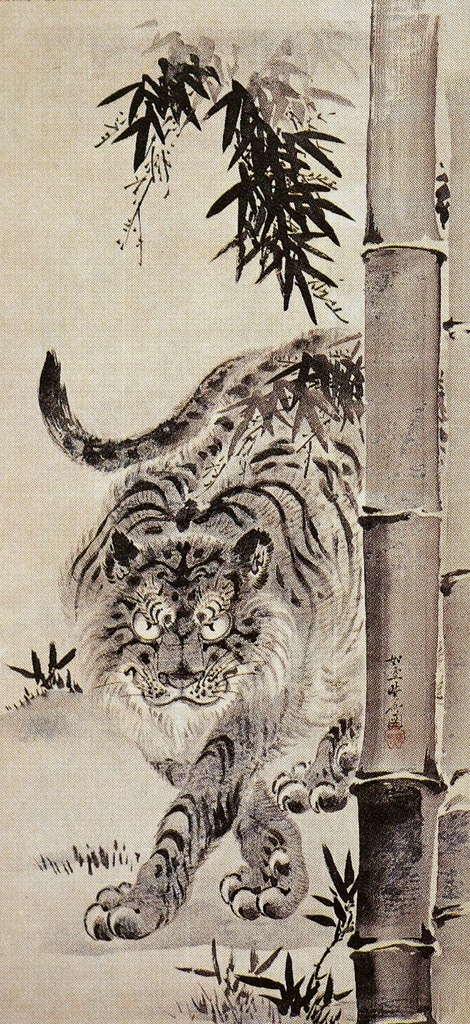

So yes, the man had so much talent I don't think he could do anything that looked bad if he tried (which he did), and his art is just so eclectic, with his style tailoring itself to the subject matter brilliantly. For example, I think he captures gore and horror better than anyone (and I would never want to go drinking with him if this is what he sees in his head whilst intoxicated).
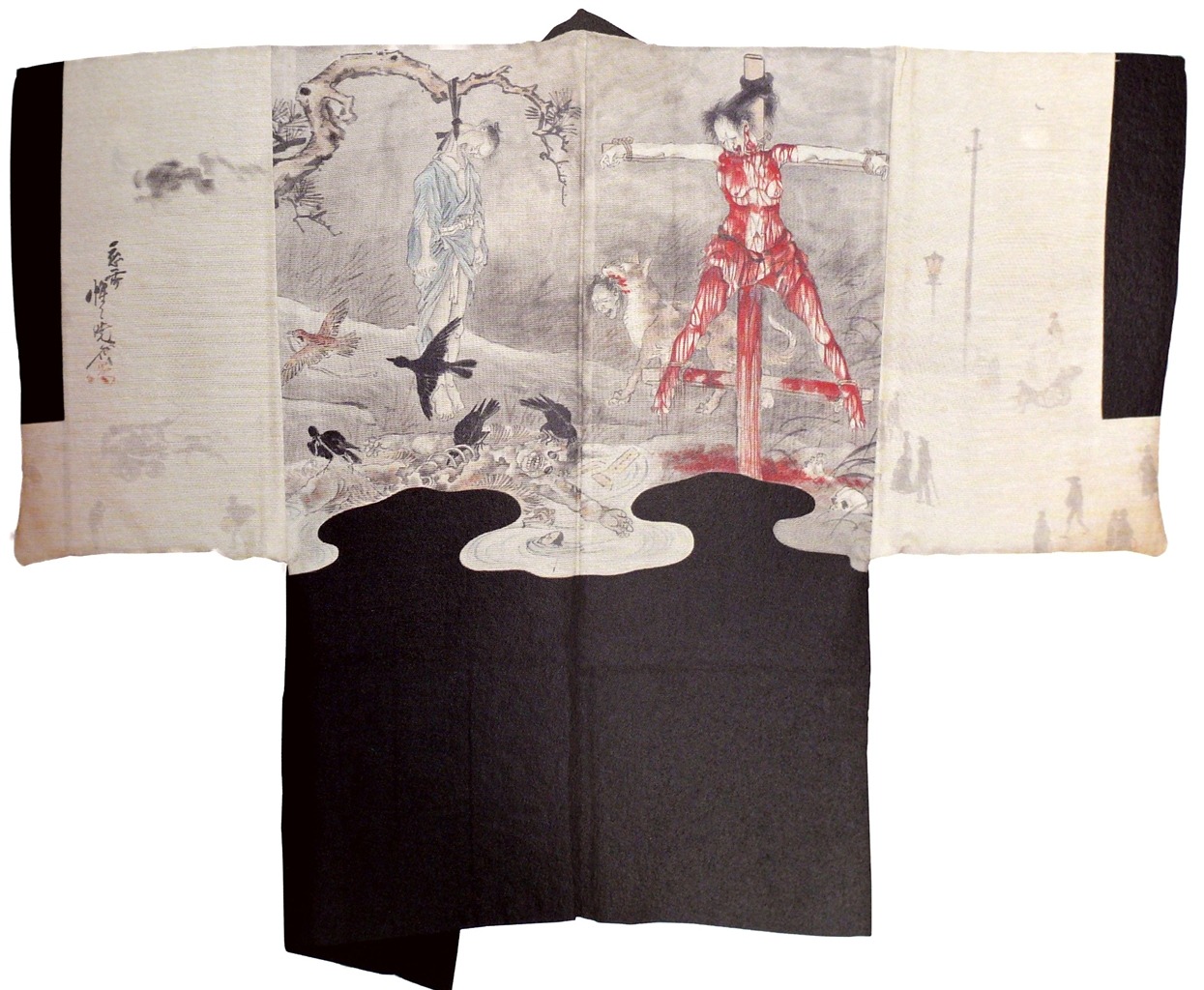
Regardless, I totally would wear that (it's on the inside of the coat, so nobody else would see).
And just as ghastly as that image was, he's able to draw religious imagery that actually invokes a religious sort of feeling. I am most impressed by the reverent hand that made these, knowing it's the same callous hand from his other work, the same calm hand that made beautiful portraits of nature, the same hand which, in a drunken rage, made him famous. His mastery of beauty and ugliness is second to none.

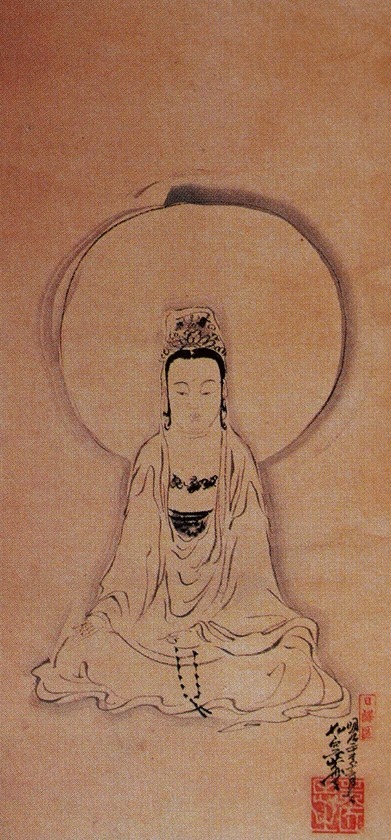
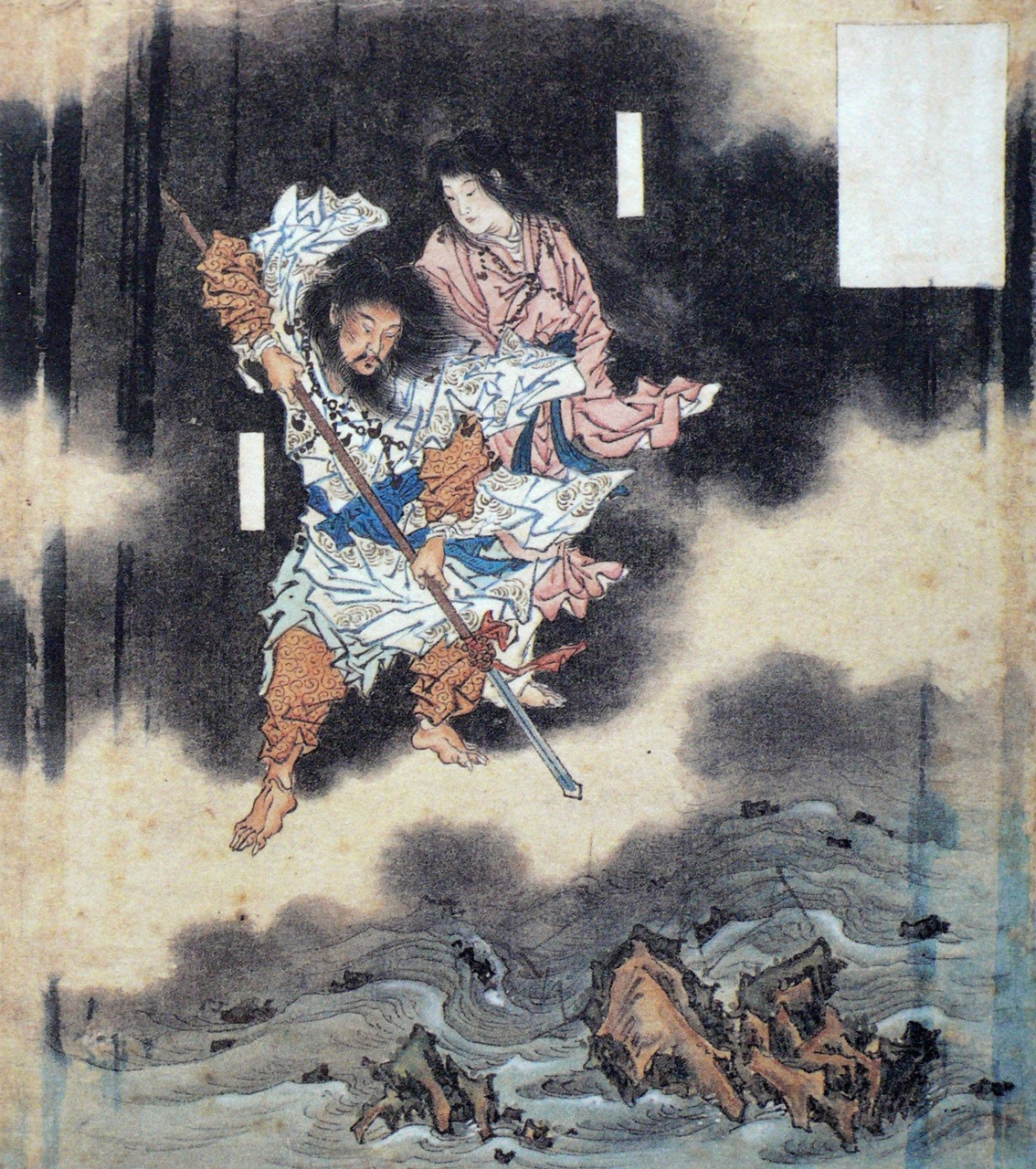
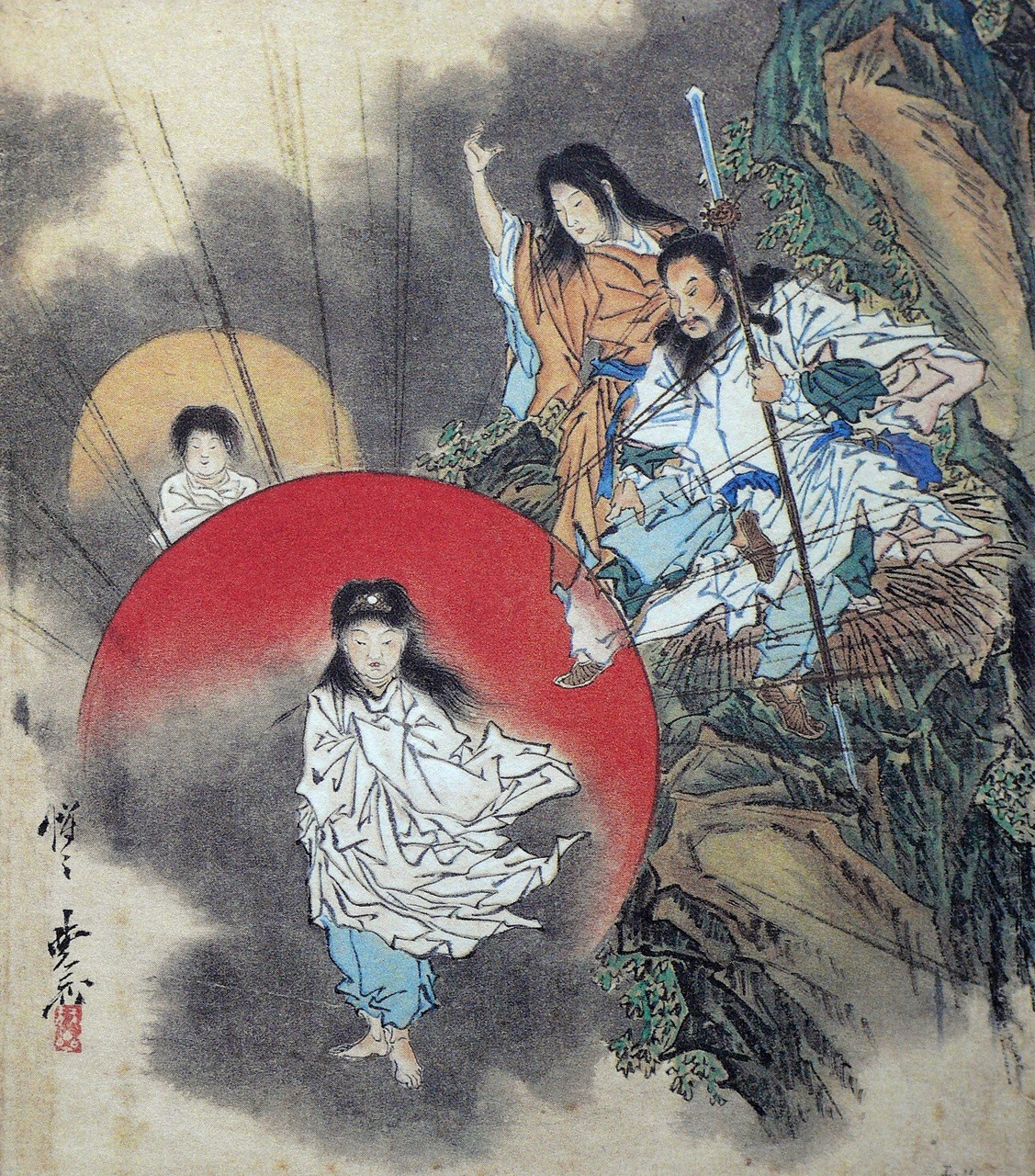
You can see clearly that the pieces are by Kyōsai, and yet the Buddhist imagery is distinctly in the Buddhist aesthetic, while the Shinto art masterfully captures the feeling of rustic simplicity evident in all classical Shinto art. I am amazed how he can make each piece feel exactly like it is supposed to, without sacrificing his own artistic style. He depicts things as they are, so the viewer will feel "Yes, this is just like what it is to watch a kabuki," "Yes, this is just how I feel when I see a sculpture of the Buddha," "Yes, this is just what that yōkai must truly look like."
In fact, some of his best-known works depict yōkai!

This is very famous. It's actually a design for a curtain at a Kabuki theatre. Actor's crests are featured at the top, and actors are depicted as famous monsters in Kabuki. Kyōsai did this while in a sake-induced state of wild creativity, and completed the whole thing in four hours!

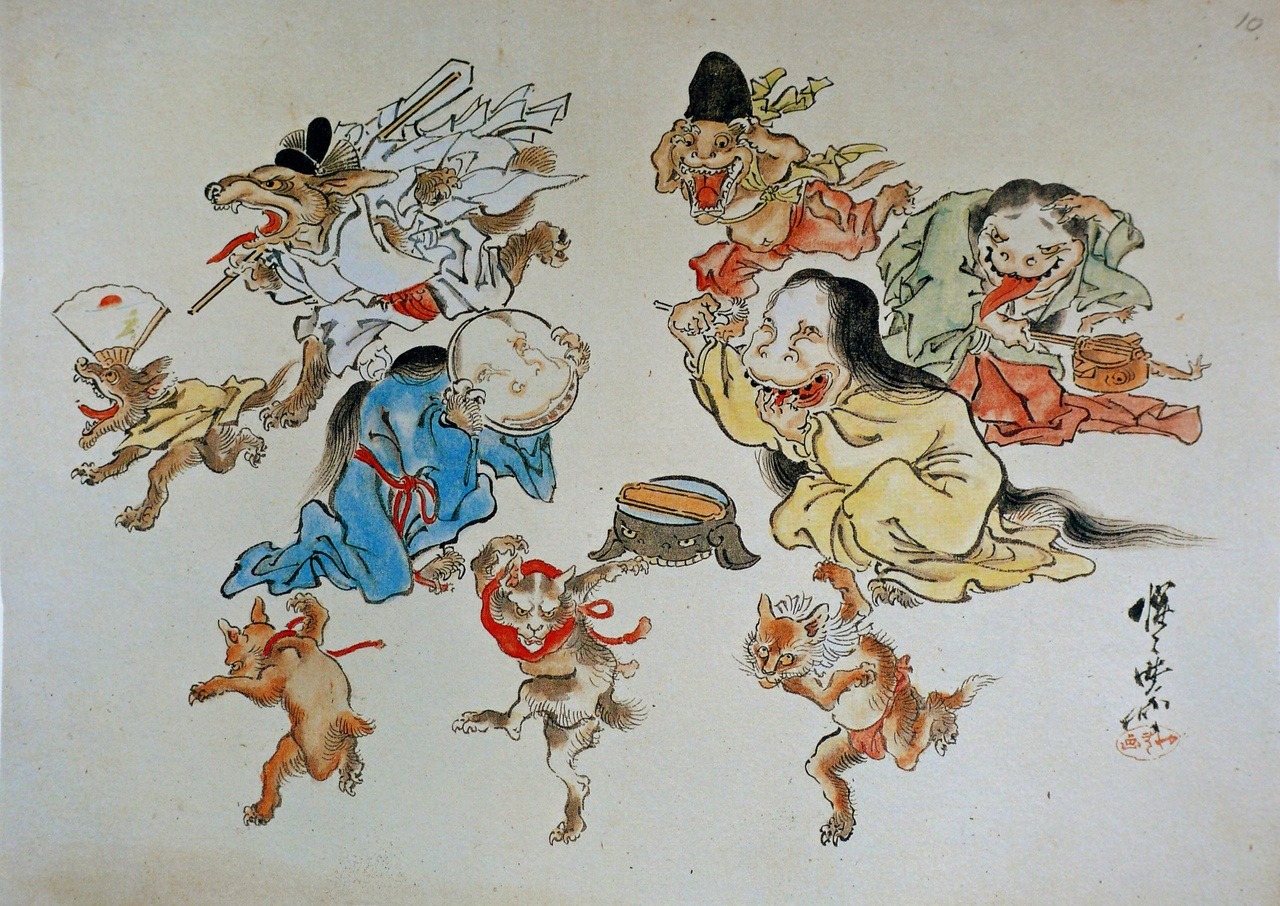
He also did many series of hyakkiyakou, and many more anonymous ones are also said to be "inspired by" or "in the style of Kawanabe Kyōsai." His images of yōkai are actually what made him well-known, though he is remembered now primarily for his talent and being one of the last artists to really employ a purely Japanese style in his paintings.
But let's re-visit some of Kyōsai's versions of yōkai we've seen before.
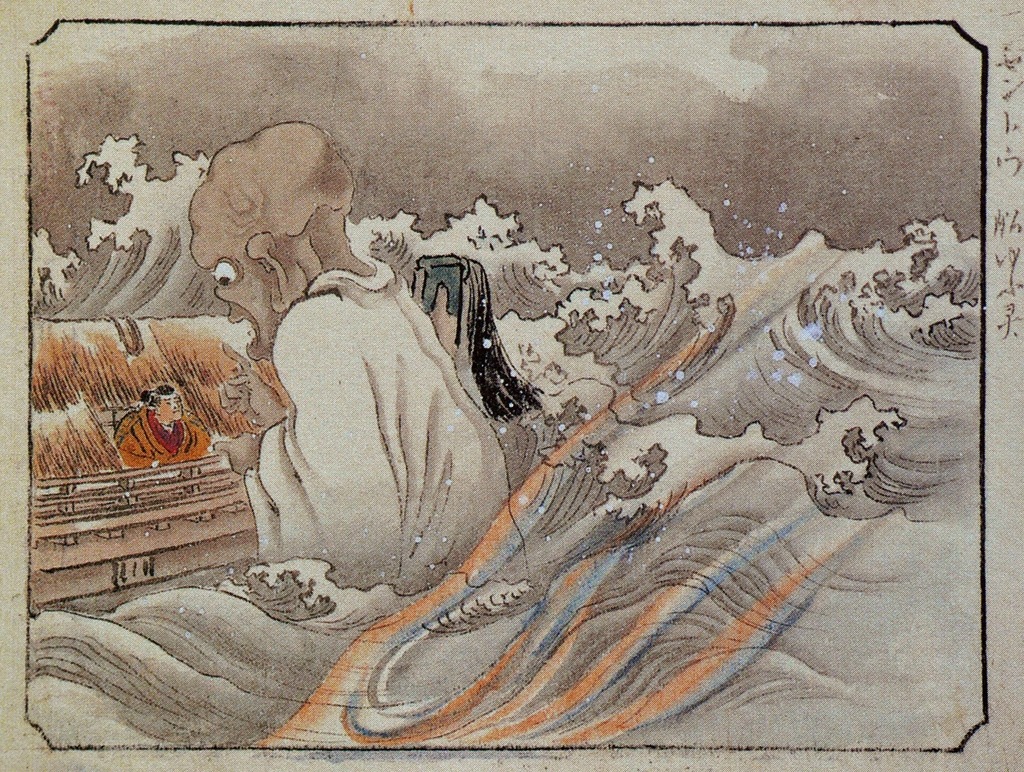
Funa-Yūrei
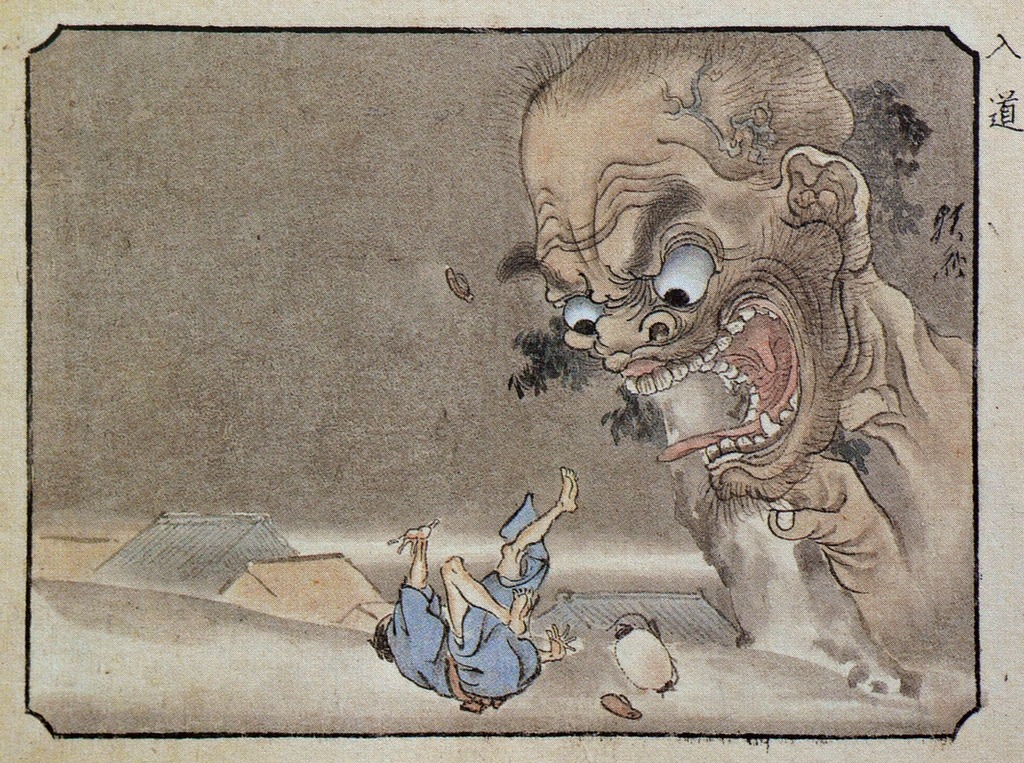
Onyudo
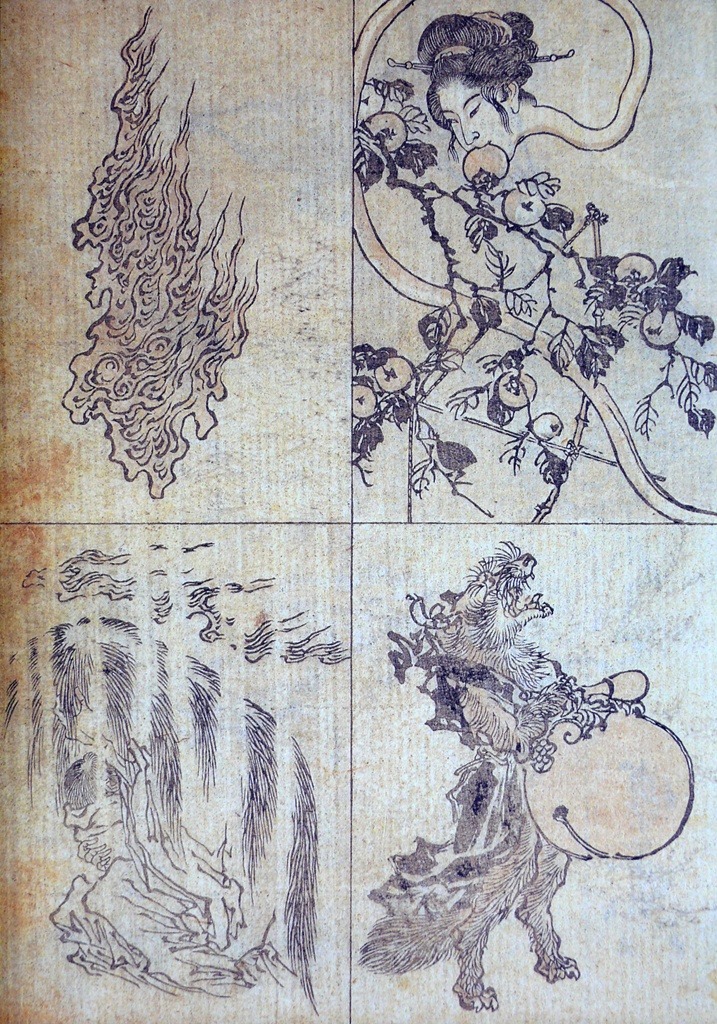
Clockwise from top right: Rokurokubi, Tanuki, Ubume, Onibi.

Jigoku Dayu
That link also includes two other interpretations on the subject by Kyōsai, including one of my favourites. He drew her a lot... maybe he felt some strange kinship with the insanity of Ikkyū-san. Or maybe it's just because the man could draw some cool skeletons.


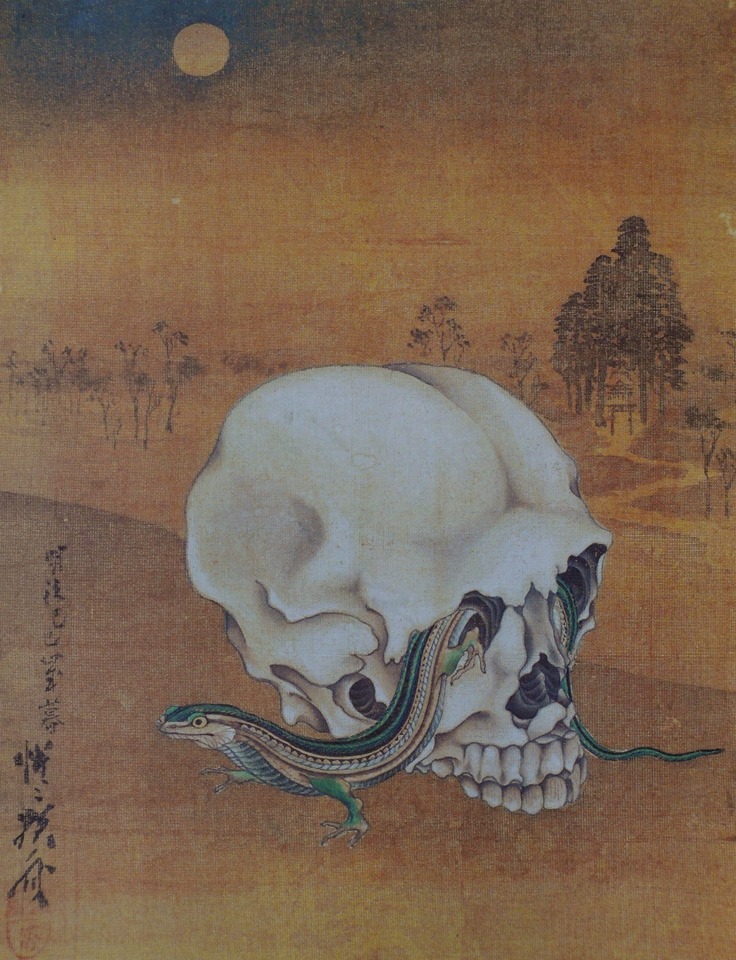
And below is an equally-cool yōkai-shadows-in-a-jar motif that he used a few times. It was featured as the cover art for a rather interesting dissertation on how yōkai were adapted and repressed in the face of Japanese modernism.

I recommend it to those wishing to read an actual authority figure expound on the subject as I continue the uphill climb to becoming one myself.
Actually, my favourite thing that Kyōsai paints are ghosts.

They're very scary.
Really, as I was saying about Kyōsai perfectly capturing his subject matter, and without giving myself away too much, I believe that this is exactly what ghosts truly look like. None of that pining, beautiful apparition-in-the-night by Yoshitoshi and his ilk. Yūrei are haggard, wispy, and in various stages of decay. That's how come they linger on in our world: they're still bound to it, horribly.

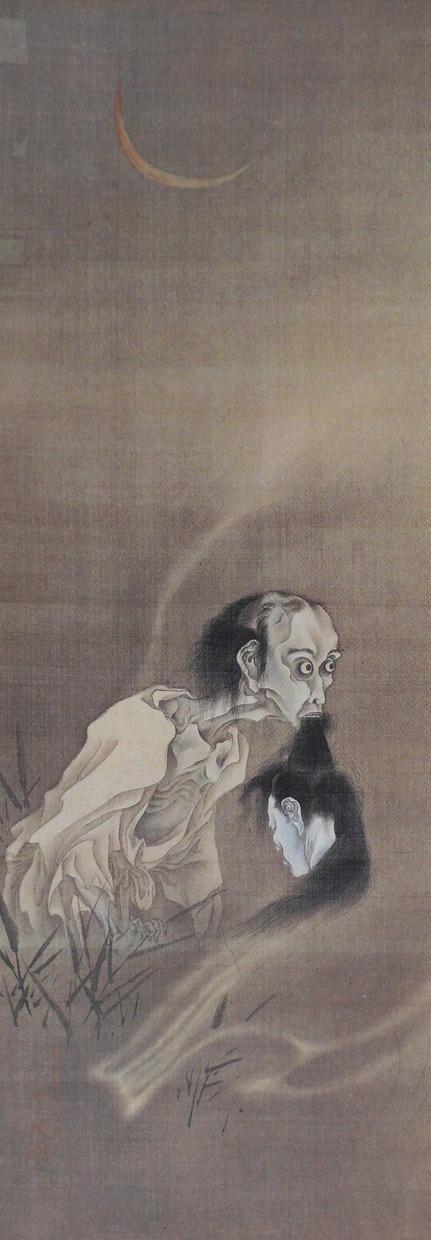



I wish I could show you all of Kyōsai's art. It's so varied and amazing. He did tons of images of Enma Dai-Oh,
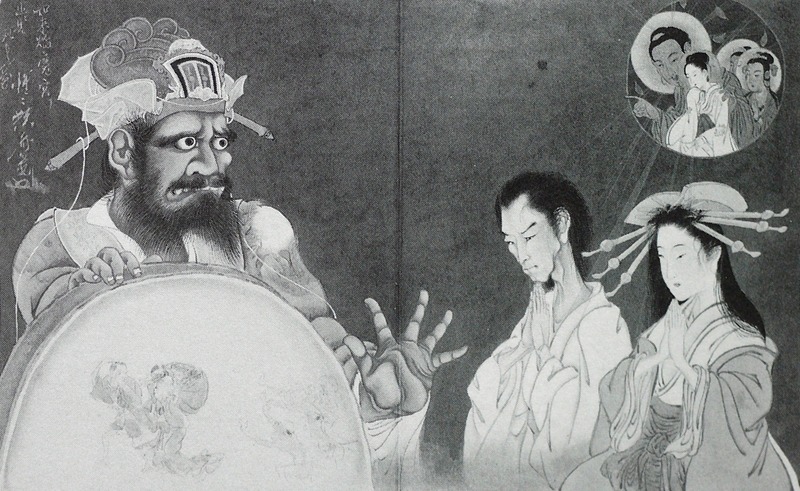
Kabuki,
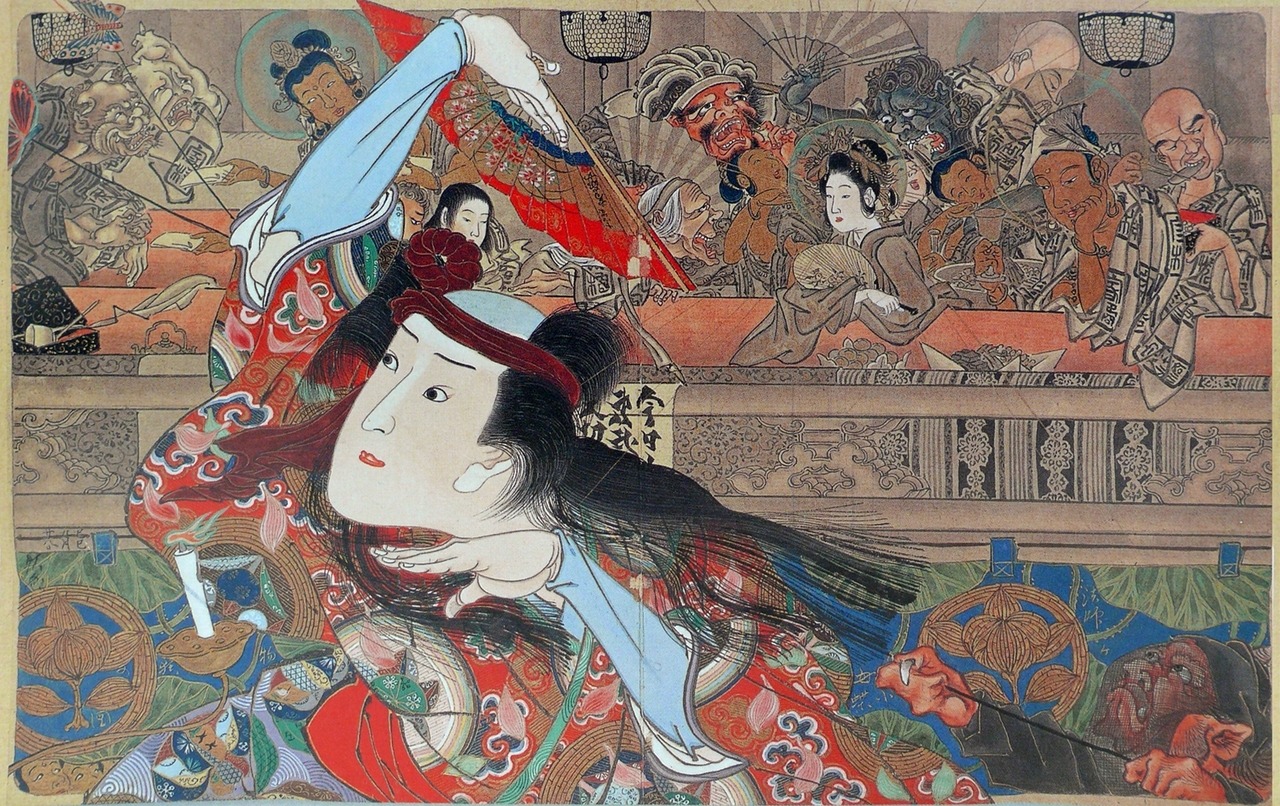
Noh,

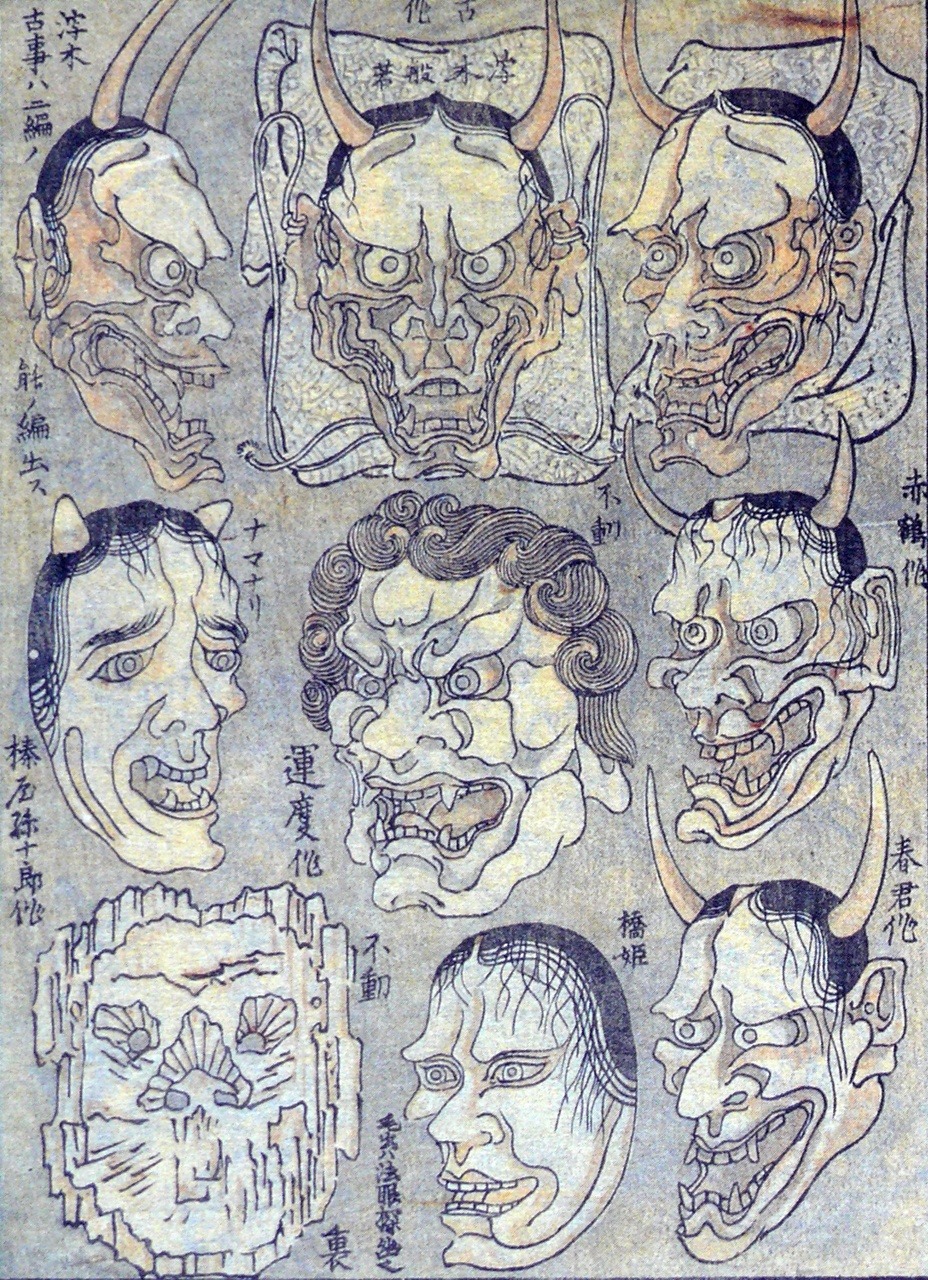
ghosts and demons and yōkai, Buddhas and goddesses, landscapes and city scenes,

battles and images of history, flowers and still-life, beautiful ladies and noble gentlemen,

political cartoons,
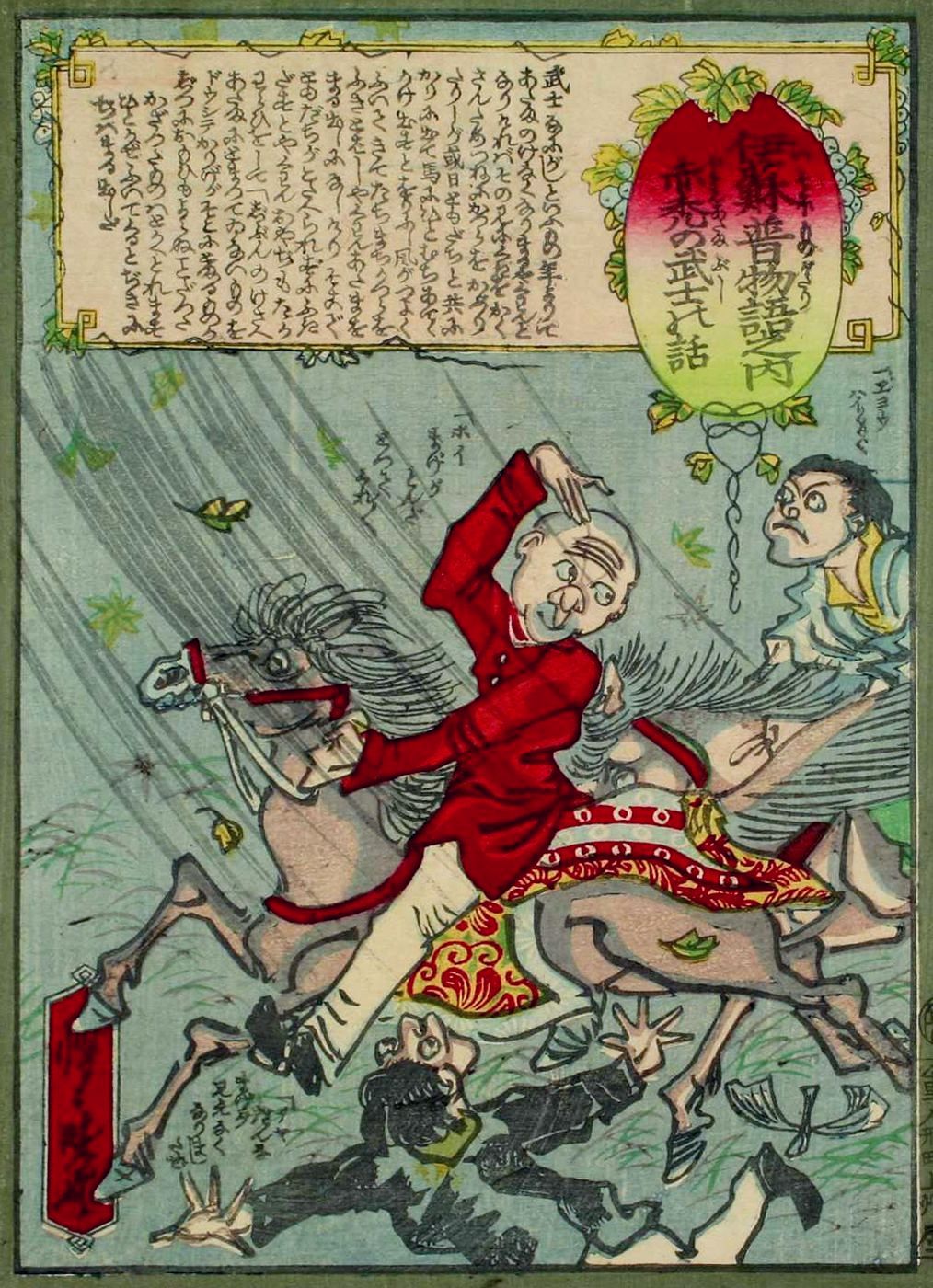
Gandalf,

studies of animals, funny characters,

artistic screens,
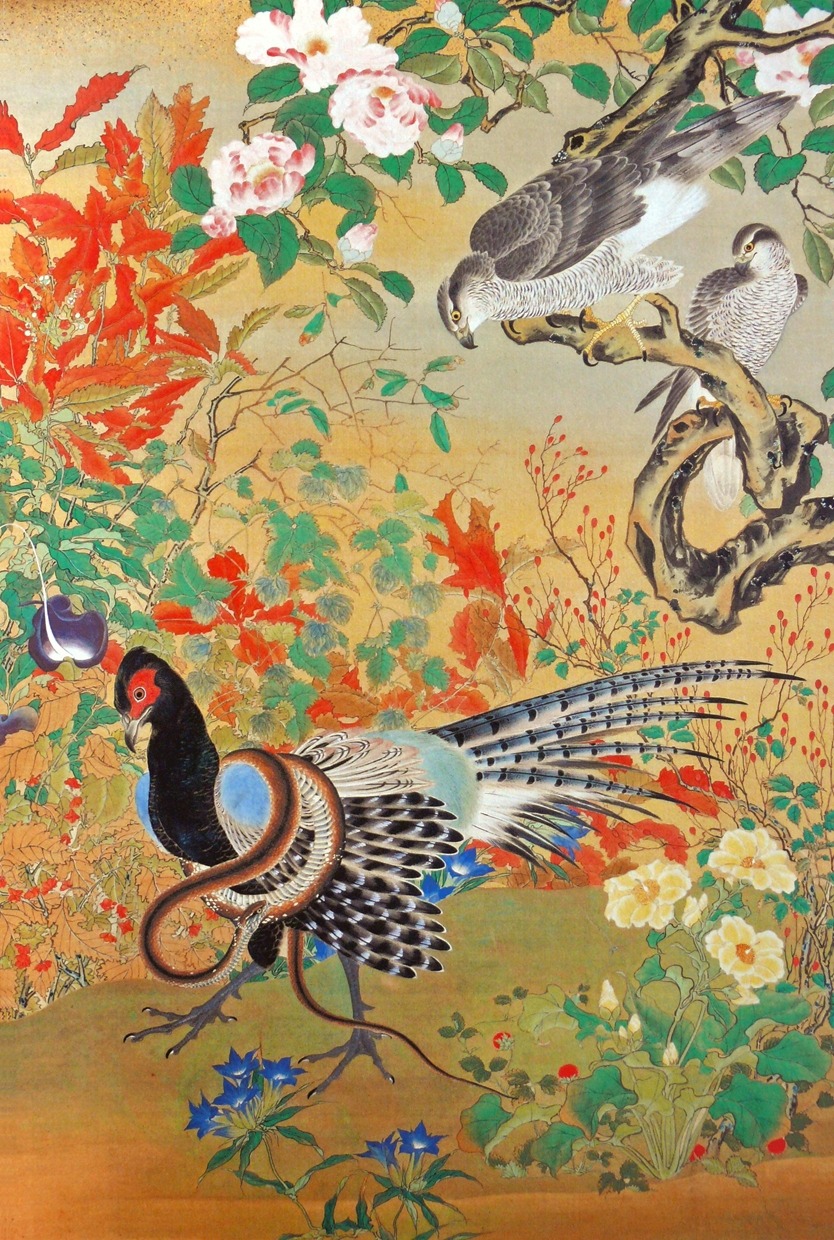
and much much more (including all the fart battles and some porn... of course).
But those will have to be saved for a later day.
Please note that all photos in this entry are clickable to a high-resolution image.
I hope you've all enjoyed this foray into the world of fine Japanese art, and one of my favourite artists. Also, farts are funny.
Nice post. Ripe with information(?).
ReplyDeleteSeems to me that one side is losing rather badly in the fart battle, haha.
And that Gandalf.............